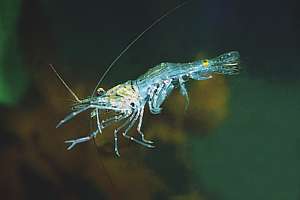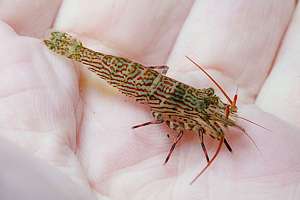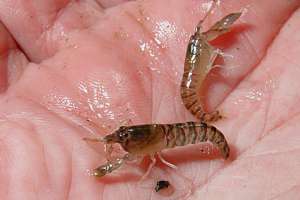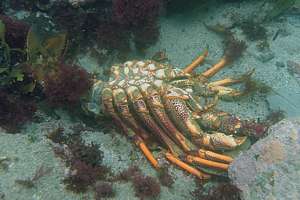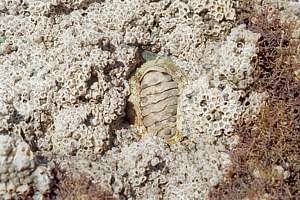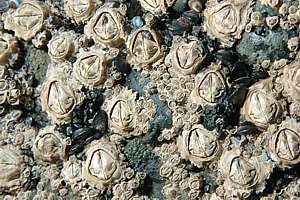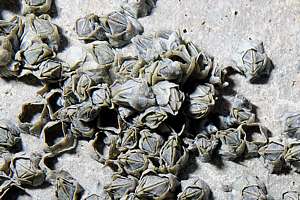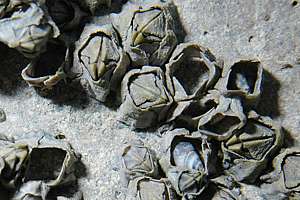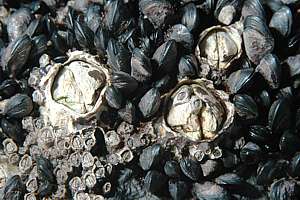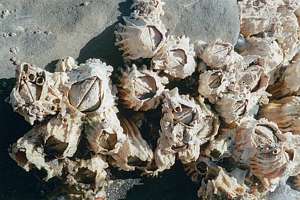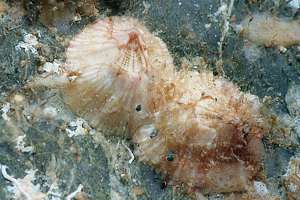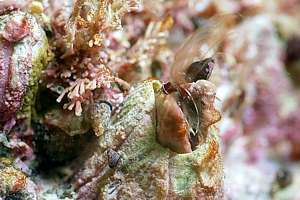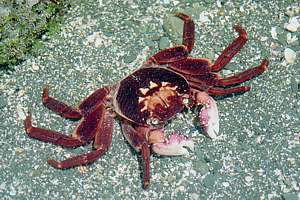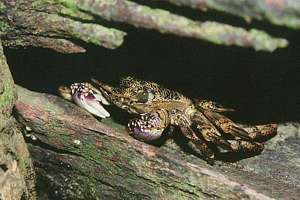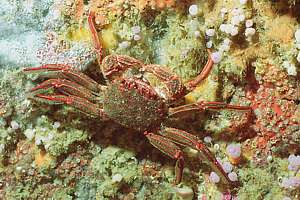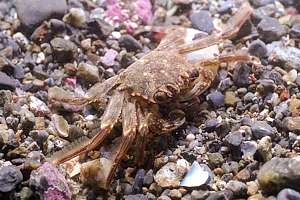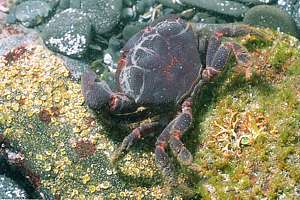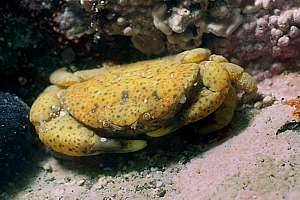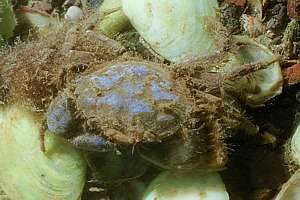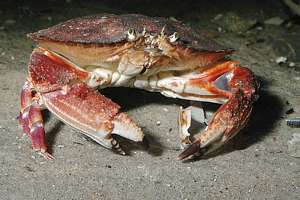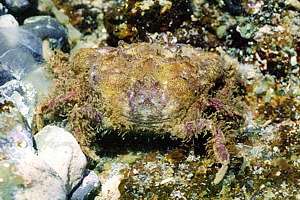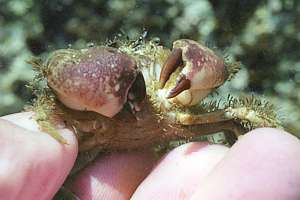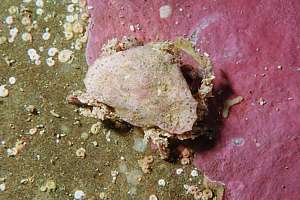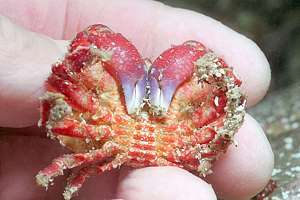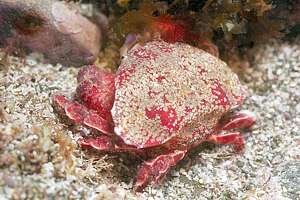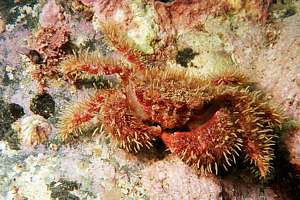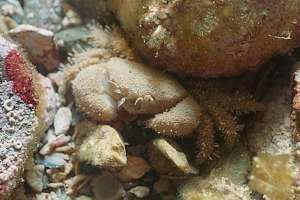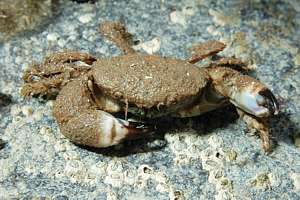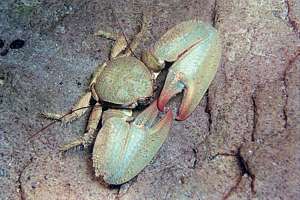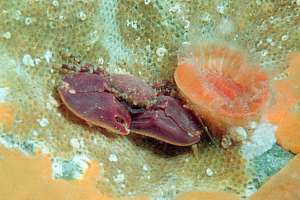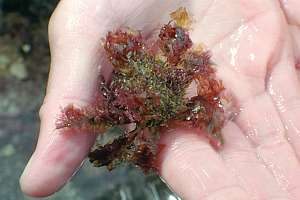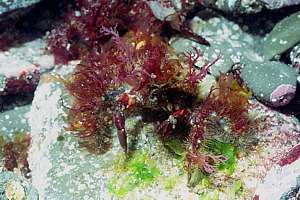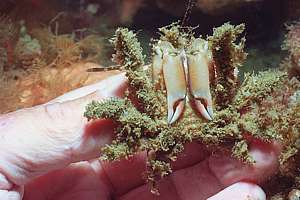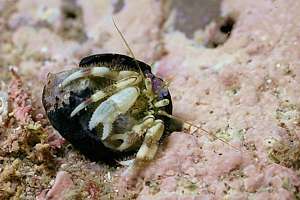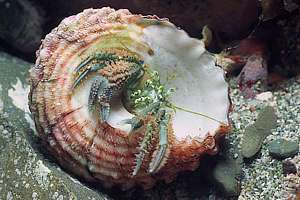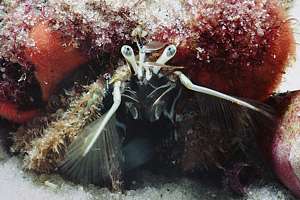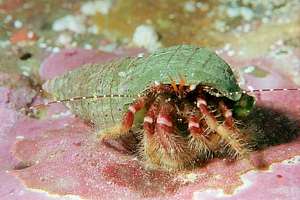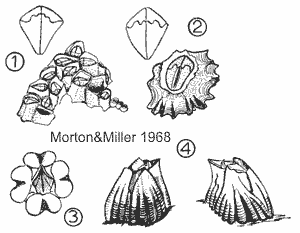 The four intertidal barnacle species: 1. column barnacle
Chamaesipho
columna, 2. brown barnacle Chamaesipho brunnea, 3. modest
or sheet or beaked barnacle Austrominius modestus, was (Elminius
modestus), 4. plicate barnacle Epopella plicata (Elminius plicatus).
The brown barnacle lives highest up the shore, followed by the columnar
barnacle, plicate barnacles and sheet (modest) barnacles.
The four intertidal barnacle species: 1. column barnacle
Chamaesipho
columna, 2. brown barnacle Chamaesipho brunnea, 3. modest
or sheet or beaked barnacle Austrominius modestus, was (Elminius
modestus), 4. plicate barnacle Epopella plicata (Elminius plicatus).
The brown barnacle lives highest up the shore, followed by the columnar
barnacle, plicate barnacles and sheet (modest) barnacles. |
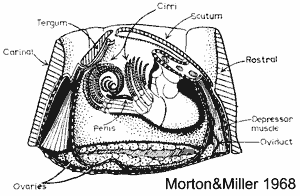 A barnacle is a crustacean, living upside down in a house
of 4 or 6 plates in such a way that it can grow these plates bigger. Instead
of having legs for walking, its legs have adapted to catching plankton,
as they are studded with bristles. It has long catching legs and shorter
ones to sweep these clean.
A barnacle is a crustacean, living upside down in a house
of 4 or 6 plates in such a way that it can grow these plates bigger. Instead
of having legs for walking, its legs have adapted to catching plankton,
as they are studded with bristles. It has long catching legs and shorter
ones to sweep these clean.
The Chamaesipho barnacles have 6 column plates
whereas the Elimius barnacles have 4. Below the intertidal more
kinds of barnacle ar found, including the large Balanus species. |
